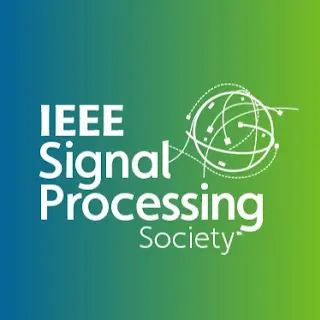Issue on Structured Matrices in Signal and Data Processing

The idea of representing a signal as a vector living in some linear vector space has borne tremendous fruit in signal processing: this viewpoint provides an encompassing framework for classical least-squares and subspace-based signal processing, and a language with which to model a signal’s structural properties.
Frequently, the matrix at the heart of a signal or data processing problem may exhibit a certain structure that can be exploited to better solve that problem. Circulant matrices can be diagonalized via the discrete Fourier transform (DFT) and applied efficiently. Toeplitz and Hankel matrices exhibit similar structure. The important low-rank matrix model asserts that the matrix columns live in a low-dimensional subspace; this allows highdimensional matrices to be factored into products of lowerdimensional matrices. This fact has far-reaching implications: low-rank models are ubiquitous in classical subspace-based signal processing, and principal component analysis (PCA) is fundamental for dimensionality reduction. Other types of structured models lead to unique matrix factorizations in signal and data processing: restricting the matrices to be non-negative is a model used in imaging, source separation problems, and text analysis; restricting one of the factors to be sparse leads to sparse representations for dictionary learning.
This special issue of
IEEE Journal of Selected Topics in Signal Processing, June 2016, brings together work from a variety of research areas, all of which involve discovering or exploiting structured matrices in signal and data processing. This appears to be a topic of great interest in the field.
Reference
Michael B. Wakin, Rémi Gribonval, Visa Koivunen, Justin Romberg, John Wright. Introduction to the Issue on Structured Matrices in Signal and Data Processing. IEEE Journal of Selected Topics in Signal Processing. 2016, 10(4), pp.605-607
 The idea of representing a signal as a vector living in some linear vector space has borne tremendous fruit in signal processing: this viewpoint provides an encompassing framework for classical least-squares and subspace-based signal processing, and a language with which to model a signal’s structural properties.
Frequently, the matrix at the heart of a signal or data processing problem may exhibit a certain structure that can be exploited to better solve that problem. Circulant matrices can be diagonalized via the discrete Fourier transform (DFT) and applied efficiently. Toeplitz and Hankel matrices exhibit similar structure. The important low-rank matrix model asserts that the matrix columns live in a low-dimensional subspace; this allows highdimensional matrices to be factored into products of lowerdimensional matrices. This fact has far-reaching implications: low-rank models are ubiquitous in classical subspace-based signal processing, and principal component analysis (PCA) is fundamental for dimensionality reduction. Other types of structured models lead to unique matrix factorizations in signal and data processing: restricting the matrices to be non-negative is a model used in imaging, source separation problems, and text analysis; restricting one of the factors to be sparse leads to sparse representations for dictionary learning.
This special issue of IEEE Journal of Selected Topics in Signal Processing, June 2016, brings together work from a variety of research areas, all of which involve discovering or exploiting structured matrices in signal and data processing. This appears to be a topic of great interest in the field.
Reference
Michael B. Wakin, Rémi Gribonval, Visa Koivunen, Justin Romberg, John Wright. Introduction to the Issue on Structured Matrices in Signal and Data Processing. IEEE Journal of Selected Topics in Signal Processing. 2016, 10(4), pp.605-607
The idea of representing a signal as a vector living in some linear vector space has borne tremendous fruit in signal processing: this viewpoint provides an encompassing framework for classical least-squares and subspace-based signal processing, and a language with which to model a signal’s structural properties.
Frequently, the matrix at the heart of a signal or data processing problem may exhibit a certain structure that can be exploited to better solve that problem. Circulant matrices can be diagonalized via the discrete Fourier transform (DFT) and applied efficiently. Toeplitz and Hankel matrices exhibit similar structure. The important low-rank matrix model asserts that the matrix columns live in a low-dimensional subspace; this allows highdimensional matrices to be factored into products of lowerdimensional matrices. This fact has far-reaching implications: low-rank models are ubiquitous in classical subspace-based signal processing, and principal component analysis (PCA) is fundamental for dimensionality reduction. Other types of structured models lead to unique matrix factorizations in signal and data processing: restricting the matrices to be non-negative is a model used in imaging, source separation problems, and text analysis; restricting one of the factors to be sparse leads to sparse representations for dictionary learning.
This special issue of IEEE Journal of Selected Topics in Signal Processing, June 2016, brings together work from a variety of research areas, all of which involve discovering or exploiting structured matrices in signal and data processing. This appears to be a topic of great interest in the field.
Reference
Michael B. Wakin, Rémi Gribonval, Visa Koivunen, Justin Romberg, John Wright. Introduction to the Issue on Structured Matrices in Signal and Data Processing. IEEE Journal of Selected Topics in Signal Processing. 2016, 10(4), pp.605-607
